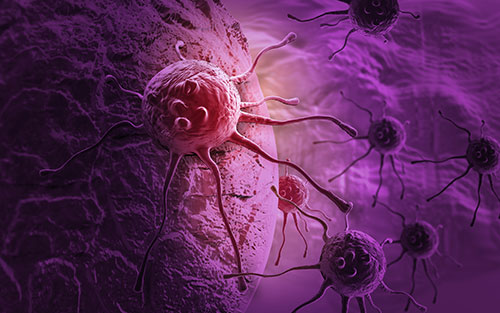How Does a Mouth Cancer Start
Understanding How Oral Cancer Is Staged and Graded CTCA
As well as trying to cure mouth cancer, treatment will focus on preserving important functions of the mouth, such as breathing, speaking and eating. Maintaining the appearance of your mouth will also be a high priority. For example, surgery may be followed by a course of radiotherapy to help prevent the cancer returning. This may be because, on average, men tend to drink more alcohol than women. Squamous cells are found in many areas of the body, including the inside of the mouth and in the skin. These measurements refer to the primary oral cancer tumor.
The symptoms of tongue cancer include a painful tongue, redness, and sores or ulcers that will not heal. The outlook for a person with oral or oropharyngeal cancer will depend on the stage of cancer, where it occurs in the mouth, and other factors. Untreated, oral cancer may start in one part of the mouth, then spread to other parts of the mouth. It may also spread to the head, neck, and the rest of the body. This therapy method can also increase the sensitivity of the cancer cells to radiation therapy. Chemotherapy medications destroy cancer cells, but they can sometimes damage healthy tissue, too.
- But doctors have identified factors that may increase the risk of mouth cancer.
- The dentist is going to inspect your mouth and lips and will look for any sores, lumps, or white patches present inside your cheeks or underneath your tongue.
- For instance, removing a larger tumor may involve removing a section of your jawbone or a portion of your tongue.
- Cancer that occurs on the inside of the mouth is sometimes called oral cancer or oral cavity cancer.
- Mouth cancer, also known as oral cancer, is where a tumour develops in a part of the mouth.
- Mouth cancer and its treatment can cause complications.
Having any of these symptoms does not mean that a person has mouth cancer, but it is worth checking with a doctor. They do not mean that someone has cancer, but people should speak to their doctor about any changes that occur in the mouth. It often comes under the category of oral and oropharyngeal cancer. Oropharyngeal cancer affects the back of the mouth and the lining of the throat. Stage II describes a tumor that is larger than 2 centimeters but not more than 4 centimeters.
Once cancer develops, you may notice some patches on the lining of your tongue or mouth, mostly colored red and white. There are also sores and ulcers that do not heal, as well as lumps or thickening of the gums or mouth lining. You can notice loose teeth for no apparent reason, along with numbness, pain, and bleeding in the mouth. Mouth cancer is caused by genetic changes in the cells.
Targeted drugs treat mouth cancer by altering specific aspects of cancer cells that fuel their growth. Targeted drugs can be used alone or in combination with chemotherapy or radiation therapy. Your doctor will recommend that you visit a dentist before beginning radiation therapy to be sure your teeth are as healthy as possible. A dentist can also help you understand how best to care for your teeth during and after radiation therapy to reduce your risk of complications. So as a cancer doctor, I’m commonly asked what is my chance of cure? And that’s a very difficult question because there is no absolute time point where we can say that you are cured of your cancer.
Changing how the world understands and treats cancer
Swelling in the neck is a common symptom of mouth cancer. This occurs due to the spread of oral cancer to the lymph nodes of the neck. If there’s anything suspicious, your care team may suggest a biopsy to test for cancer cells. Most cancers found in the mouth are squamous cell carcinoma since squamous cells cover many of the surfaces inside your mouth. Squamous cell carcinoma, also called squamous cell carcinoma, is one of the different types of cancer that develop in the skin.
You can learn more about how we ensure our content is accurate and current by reading our editorial policy. Memorial Sloan Kettering was founded in 1884, and today is a world leader in patient care, research, and educational programs. From diagnosis to treatment, our experts provide the care and support you need, when you need it. Our highly-specialized educational programs shape leaders to be at the forefront of cancer care and research. Pull your tongue out gently with clean fingers and inspect underneath.
You might only need one treatment or you might need a combination of treatments. In the earliest stages of oral cancer, many people experience no symptoms or mistake them for those of another condition. Regular checkups with the dentist may help identify any early warning signs. Learn enough about mouth cancer to make treatment decisions. Make a list of questions to ask at your next appointment.
How To Prevent The Start of Mouth Cancer?
In the laboratory, the cells are analyzed for cancer or precancerous changes that indicate a risk of future cancer. Your doctor or dentist will examine your lips and mouth to look for abnormalities — areas of irritation, such as sores and white patches . There are many ways to prevent oral cancer from developing. Aside from the ones listed above, it also helps to maintain good oral hygiene, combined with a healthful diet with lots of fresh fruits and vegetables. Finally, get regular checkups with a reputable dentist in your area so you can spot any dental problems in their early stages. Take note that having these signs does not mean that you have oral cancer, but it helps to get them checked by a doctor.
What does mouth cancer look like?
For lip cancers, the tumor is growing into nearby bone, the inferior alveolar nerve , the floor of the mouth, or the skin of the chin or nose. Unfortunately, because mouth cancer doesn’t often cause severe symptoms, it’s often not diagnosed until it’s more advanced. That’s why Akhave stresses the importance of regular dental checkups, which can detect the earliest signs of mouth cancer. Here, he explains what mouth cancer, also called oral cancer, looks like. “Anything out of the ordinary should be shared with your doctor,” says head and neck cancer specialist Neal Akhave, M.D. Early mouth and oropharyngeal cancer is termed stage 0 and then stages range from 1 to 4, where stage 4 means the disease is more widespread.
Radiation therapy and chemotherapy may be used before or after surgery. One is called oral tongue cancer because it affects the part you can stick out. The other happens at the base of your tongue, where it connects to your throat. This type, called oropharyngeal cancer, is often diagnosed after it has spread to the lymph nodes in your neck.
The average age at diagnosis is 62 years old, but around 25% of cases happen before the age of 55, say the ACS. The disease is more likely to affect males than females. A gum biopsy is a procedure that removes gum tissue for analysis in a laboratory. When should you worry about a bump, sore, or swelling in your mouth? Connect with others like you for support and answers to your questions in the Head & Neck Cancer support group on Mayo Clinic Connect, a patient community.
Salivary gland cancer is a type of cancer that affects one of the salivary glands. Learn more details about treatment, symptoms, and causes here. If the biopsy reveals mouth cancer, the next task is to determine the stage.





